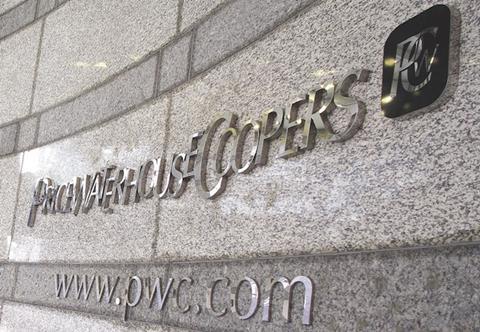
Professional services organisation PricewaterhouseCoopers (PWC) has seen its mean gender pay gap narrow from 15.2% in 2016 to 13.7% for hourly fixed pay at April 2017.
PWC has reported its snapshot data for 5 April 2017 in compliance with gender pay gap reporting regulations, which includes publishing the data on the government’s online gender pay gap viewing service.
The median gender pay gap for hourly fixed pay is 14.2% at 5 April 2017.
The mean gender pay gap for bonus pay is 37.5% in the 12 months to 5 April 2017, and the median gender pay gap for bonuses is 39.5%. In the 2016 performance year, 74.3% of women received bonus pay, compared to 72.6% of men.
Of the employees in the highest pay quartile at PWC, 38.6% are women, compared to 46.9% in the second quartile, 53.7% in the third quartile, and 52.5% in the lowest pay quartile.
The gender pay gap at the organisation has been attributed to a greater number of men in senior positions, and the fact that women fill the majority of part-time roles.
To address the gender pay gap, PWC is reviewing its recruitment processes and examining how to make more senior jobs open to flexible working. The organisation also offers a returnship programme.
PWC has committed to HM Treasury’s Women in Finance Charter, which encourages gender diversity within the financial services sector. As part of this, the organisation has implemented grade pool targets to help drive recruitment, promotion, and retention strategies.
The organisation has voluntarily published its gender pay gap since 2014.
The gender pay gap reporting regulations require organisations with 250 or more employees to publish the difference between both the mean and median hourly rate of pay for male and female full-time employees; the difference between both the mean bonus pay and median bonus pay for male and female employees; the proportions of male and female employees who were awarded bonus pay; and the proportions of male and female full-time employees in the lower, lower middle, upper middle and upper quartile pay bands.
The Government Equalities Office launched the online gender pay gap viewing service in April 2017 to allow the public to see the data that employers have published so far to fulfil their gender pay gap reporting obligations.
Laura Hinton, head of people at PWC, said: “We are committed to creating an inclusive, fair and diverse business and tackling the underlying causes of our gender pay gap. Publicly reporting our gender pay gap since 2014 has allowed us to understand the imbalances in our business and to do something about it, and it is encouraging to see that our gender pay gap is narrowing.
“We are confident that we pay our men and women equally for doing equivalent jobs across our business, but our gender pay gap does show us that we have more men in senior positions.
“We support the government’s move to get large [organisations] to publish their gender pay gaps. Without this collective focus, our research shows it could take 24 years to close the UK’s gender pay gap. This new level of transparency should help to drive greater accountability across UK businesses and, therefore, action to address the underlying causes. It’s not only the numbers that are important here; it’s the changes that businesses are making off the make of them and whether they understand what their data is telling them.
“There is no one easy solution and it will take a laser-like focus and collective action to create true gender parity in UK workplaces.”











